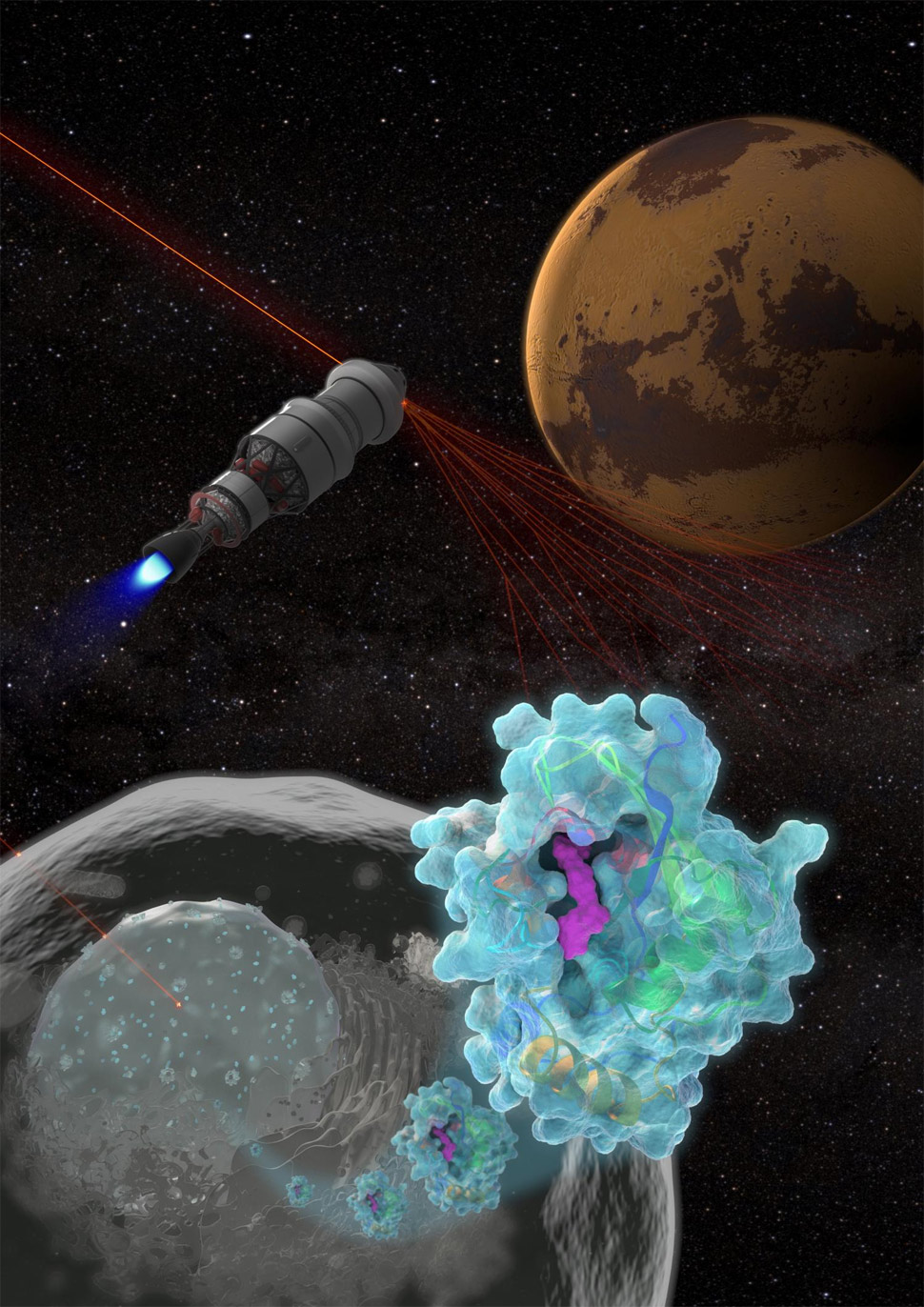
27th March 2017 Critical step found in DNA repair and cellular aging A new study on mice has found a possible treatment for DNA damage from aging and radiation. This finding could be especially helpful for astronauts in space, who are at greater risk of DNA damage from cosmic radiation.
An international team – including researchers from Harvard and the University of New South Wales (UNSW) – has made a discovery that could lead to a revolutionary drug for reversing aspects of the aging process, improving DNA repair and ensuring the long-term survival of colonists on Mars. In a paper published by the journal Science, they describe a critical step in the molecular process that allows cells to repair damaged DNA. Their tests on mice suggest a treatment is possible for humans exposed to radiation. It is so promising that it has attracted the attention of NASA, which believes the treatment can help its Mars mission during the 2030s. While our cells have an innate capability to repair DNA damage − which happens every time we go out into the Sun, for example – their ability to do this declines as we age. The scientists identified that the metabolite NAD+, which is naturally present in every cell of our body, has a key role as a regulator in protein-to-protein interactions that control DNA repair. Treating mice with a NAD+ precursor, or "booster," called NMN improved their cells' ability to repair DNA damage caused by radiation exposure or old age. "The cells of the old mice were indistinguishable from the young mice, after just one week of treatment," said the lead author, Professor David Sinclair of UNSW School of Medical Sciences and Harvard Medical School. Human trials of NMN therapy will begin within six months. "This is the closest we are to a safe and effective anti-aging drug that's perhaps only three to five years away from being on the market if the trials go well," says Sinclair.
The work has excited NASA, which faces the challenge of keeping its astronauts healthy during a four-year mission to Mars. Even on short missions, humans can experience accelerated aging from cosmic radiation, and suffer muscle weakness, memory loss and other symptoms when they return. On a trip to Mars the situation would be far worse: five per cent of the astronauts' cells would die and their chances of cancer would approach 100 per cent. Cosmic radiation is not only an issue for astronauts. We're all exposed to it aboard aircraft, with a London-Singapore-Melbourne flight roughly equivalent in radiation to a chest x-ray. In theory, the same treatment could mitigate any effects of DNA damage for frequent flyers. The other group that could benefit from this work is survivors of childhood cancers. 96 per cent of childhood cancer survivors suffer a chronic illness by age 45, including cardiovascular disease, Type 2 diabetes, Alzheimer's disease, and cancers unrelated to the original cancer. "All of this adds up to the fact they have accelerated ageing, which is devastating," explains Sinclair's colleague, Dr Lindsay Wu. "It would be great to do something about that, and we believe we can with this molecule." ---
Comments »
|







